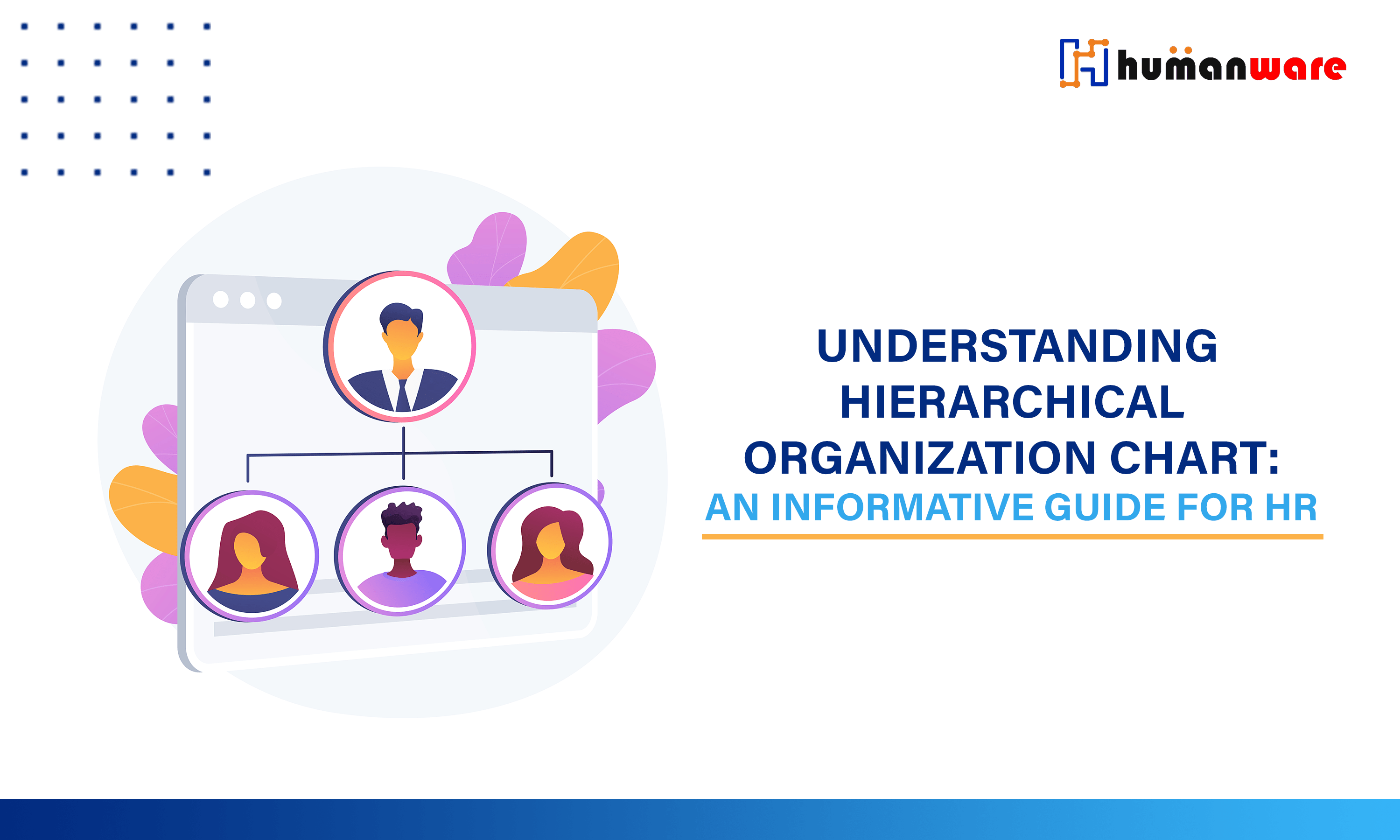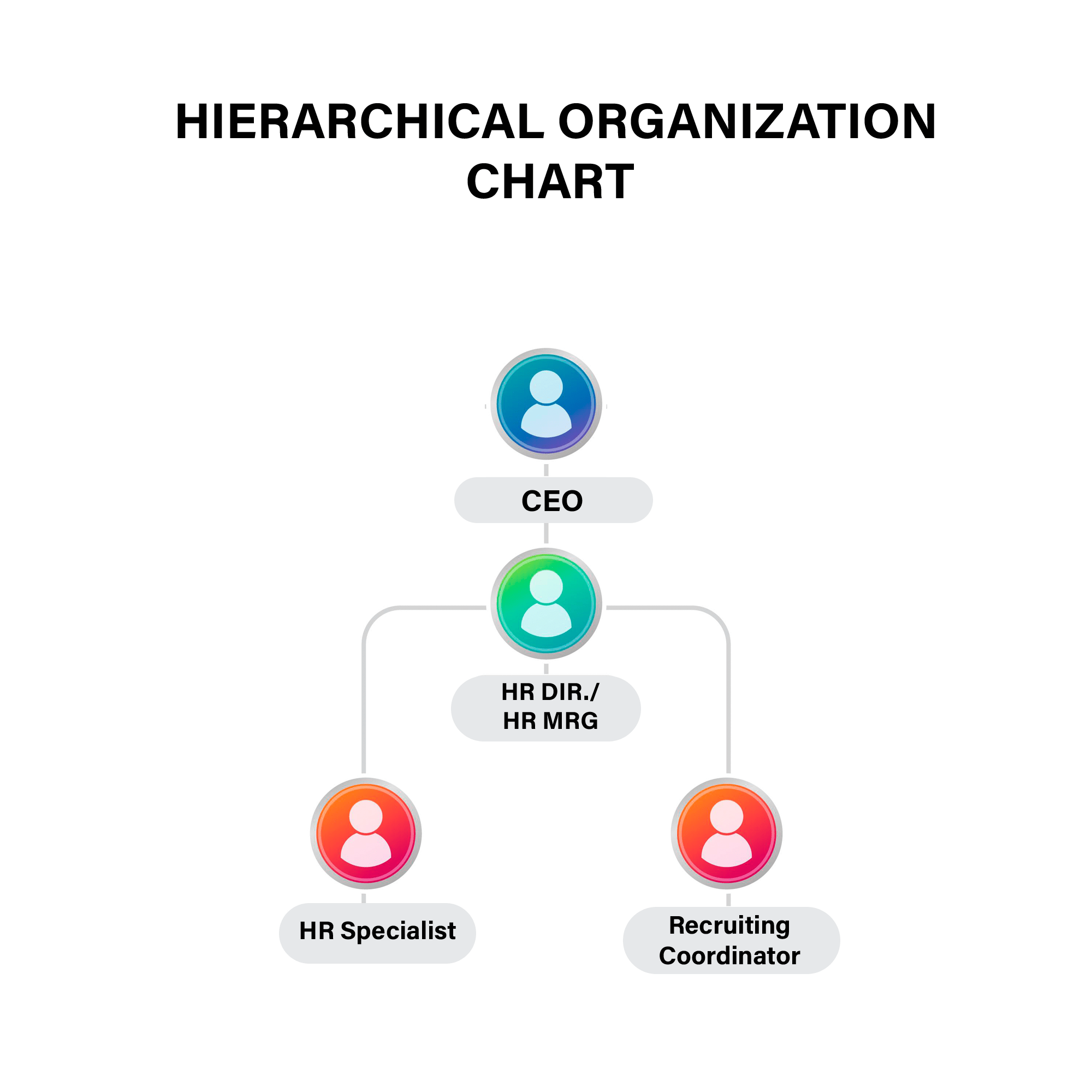
Understanding Hierarchical Organization Chart: An Informative Guide For HR
Maintaining a clear structure is essential for effective and efficient communication. One of the most common ways organizations do this is through the use of a hierarchical org chart. This visual tool describes the chain of command, clearly defining who reports to whom and how responsibilities are distributed among different levels of the company.
A hierarchical org chart typically looks like a pyramid, with senior management—such as the CEO or board of directors—at the top, followed by management and employee levels below. It provides a clear structure for decision-making, streamlines communication, and helps employees understand their role in the organization. This structure is widely used in businesses, government agencies, and large institutions because of its ability to establish clear reporting lines and maintain organizational order. In addition to streamlining internal communication, org charts also play a key role in integrating new employees by providing a clear vision of how the company is structured. While this model promotes transparency and accountability, it can also result in slower decision-making due to its rigid framework.
What is a Hierarchical Organization Chart?
A hierarchical organizational chart is a graphical representation of an organization's structure, illustrating the relationships among employees, departments, and management. It is based on a top-down approach, with authority flowing from the highest-ranking individuals (such as CEOs or directors) to lower levels of management and employees.

Key Features of a Hierarchical Organization Chart
- Top-down Structure: Higher management positions are at the top, with junior below them.
- Defined Reporting Relationships: To reducing confusion each employee has a clear reporting.
- Multiple Levels of Authority: Divided into various levels, with specific roles and responsibilities assigned to each.
- Departmental Segmentation: This structure includes divisions based on functions such as HR, finance, marketing, and operations.
Step-by-Step Guide to Implementing a Hierarchical Organization Chart
Step 1: Define the Organizational Structure
Defining the organizational structure means establishing a clear structure for organizing roles, responsibilities, and reporting relationships within the company. This step helps to understand the hierarchy, ensuring smooth workflow, accountability, and communication. This ensures that the organizational chart reflects the actual structure of the company.
Step 2: Define the Organizational Structure
Once the organizational structure is defined, the next step is to collect detailed information about employees to correctly place them in the hierarchy. This ensures accurate reporting of relationships and role assignments in the org chart. Data such as Personal information, job details, and report structure. The collected data is then used to structure and visualize the hierarchy in the org chart.
Step 3: Define the Organizational Structure
Defining an organizational structure means describing how roles, responsibilities, and reporting relationships are organized within a company. It helps create a clear chain of command, ensuring effective communication and workflow. This ensures that the organizational chart accurately reflects the structure of the company.
Step 4: Establish Visual Hierarchy
Establishing a visual hierarchy in an org chart means designing it to clearly show the chain of command and relationships within the company. This improves readability and helps employees quickly understand the structure. A well-organized visual hierarchy makes a flowchart easy to read and understand.
Step 5: Validating the Chart with Stakeholders
Validating the org chart with stakeholders ensures its accuracy, integrity, and alignment with the company structure. This step involves reviewing the org chart with key decision makers and making any necessary corrections before finalizing it. This ensures that the org chart accurately reflects the company hierarchy and avoids misunderstandings.
Step 6: Publish, Share, Maintain, and Update the Chart
Once you have completed your organizational chart, you should publish, share, and update it regularly to ensure it is accurate and useful to your employees. A well-maintained organizational chart helps employees understand their roles, improves communication, and provides clarity about your company’s structure.
Benefits of a Hierarchical Organization Chart
A hierarchical structure ensures that employees know their reporting authority, which enhances decision-making and accountability. providing a clear communication within the organization.
Efficient communication is established with well-defined roles and levels reduce miscommunication, as individual employees know whom to contact for approvals or guidance when required.
Employees can see a clear career path within the organization, helping with motivation and retention in the organization.
Task delegation is more efficient, as responsibilities are clearly assigned to different levels in the organization for clear communication.
With hierarchical organization structure better control & supervision as managers can closely monitor their team or individual, ensuring productivity and alignment with company goals.
Best Practices for Implementing a Hierarchical Organization Chart
1. Creating dynamic org charts.
2. Keep the chart updated as roles and responsibilities change.
3. Promote an open-door policy to reduce hierarchical bottlenecks.
4. Avoid overcomplicating the chart with unnecessary layers.
5. While hierarchy is essential, encourage teamwork across levels to foster innovation.
Conclusion
In any organization, structure plays a key role in defining roles, responsibilities, and communication channels. One of the most used organizational structures is the hierarchical organization chart. This organization chart provides a clear, visual representation of the chain of command and helps streamline workflow.
The hierarchical org chart is a valuable tool for effectively structuring businesses. While it provides clarity, control, and career progression, it must be carefully designed to avoid bureaucracy and rigidity. By implementing best practices, organizations can create a hierarchy that promotes efficiency and collaboration.